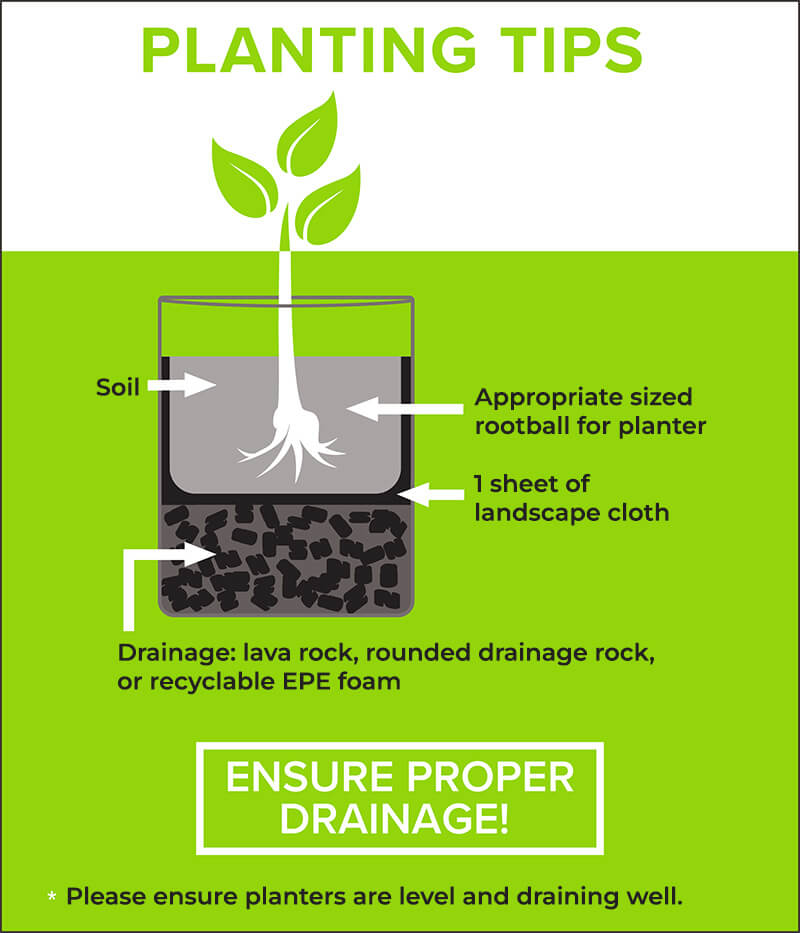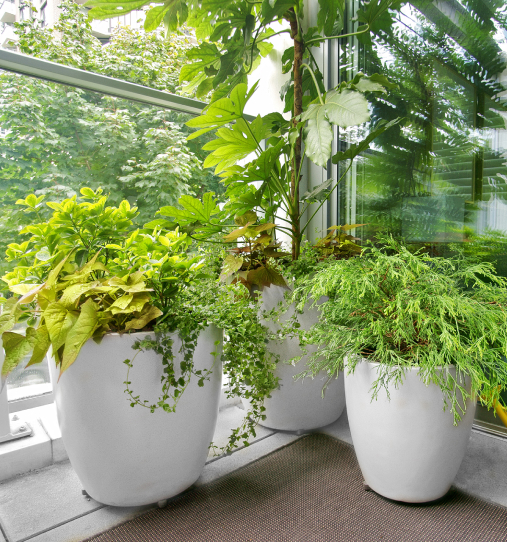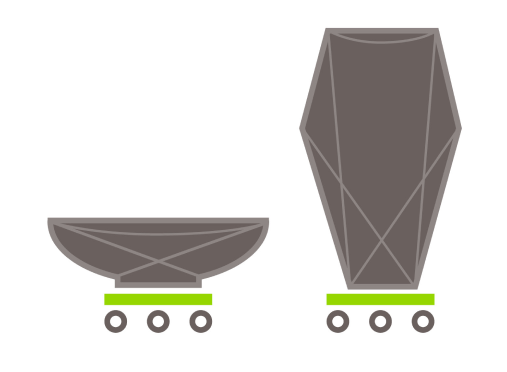
For Starters
All planters are inspected prior to loading and/or shipping. Please REMOVE ALL SHRINK-WRAP or CARDBOARD from planters as soon as you receive your planters.
Shrink-wrap can affect the finish of the planter if kept on. Cardboard can stick to the planters, and become difficult to remove.
KEEP PLANTERS in a dry, covered area if storing planters while empty.

RESIN, FIBERGLASS & COMPOSITE planters are durable and lightweight. However, these planters are made in three sections (the bottom, walls, and the top) which require that care must be taken to ensure that:
- Planters are placed on an EVEN surface where the entire periphery of the bottom of the planter is supported. Failure to do so, will result in compromising the framework and integrity of the
planter.
- A full planter that is pulled/pushed/tugged will produce damage. The weight of soil and plant material is substantial. If moving a planter, especially a large planter, consider emptying it prior to moving. If planters will be moved often, consider placing dollies prior to planting (see below, under ‘using dollies’).
Good Drainage:
- Many planters come with built-in feet to elevate planters. Otherwise, using ‘pot toes’ or 1″ tiles are good choices. Ceramic feet can damage resin or composite planters because they typically slope. Space ‘pot toes’ or tiles every 12″ or so along the perimeter of the planter.
- If the planter is placed directly on grass or earth, consider putting planters on concrete tiles to prevent the planter from sinking into the earth. Planters that sit directly on grass or soft ground can become plugged and prevent proper drainage.
- Use rounded drainage rock, lava rock, OR non-biodegradable styrofoam peanuts (only if you are not planting edibles) at the bottom of the planter. Gravel is not a good option; it works to push out on the walls of the planter. 1 sheet of landscape on top of the drainage rock will keep the soil from seeping out. Using landscape cloth directly over the drainage holes can result in blocking drainage holes, with water and soil pushing the cloth into the drainage holes.
- A word of caution about using wood chips for drainage: wood chips can absorb moisture and swell, retaining moisture instead of assisting drainage. ‘Unseasoned’ wood chips can also rob nutrients from plants and soil, and additionally make the soil acidic.
- Using dollies: ensure that the outer bottom edges (this is where the reinforcement is) is fully supported by the dolly. Failing to do this will result in the planter floor coming away from the planter walls. The full periphery of the planter as well as the centre of the planter must be supported.
- Ensure water is fully vacating the planter. A planter that constantly remains full of water can degrade the natural components in the Polyfiber line of planters.

Plant Size:
- Please keep in mind that the planter must be large enough to accommodate the root ball of the plant. Trees and shrubs like to grow wide; a good rule of thumb is to look for a planter that your plant/tree can grow into, usually 1-2x the size of the root ball when purchasing from a nursery. Not sure? Ask us.
- A plant with a root ball too large for the planter can result in cracks in the body of the planter, where the walls have been pushed out.
- Bamboo can be especially aggressive, and must have enough room to grow or do damage to the planter. Bamboo also requires annual care and maintenance to prevent damage to the planter. For more information, please click on: Bamboo tips.
Moving Planters:
- Planters are moulded products, meaning they are a single piece. The weight of the soil/planter material is substantial. Pushing or pulling, tugging or tipping one side of a planter can result in cracks/breaks in the rims.
- A planter may need to be emptied in order to be moved. Or, it must be evenly moved so that the planter is not twisted in any way. The larger the planter, the greater the likelihood of needing to empty it in order to move it successfully, without damage.

CLEANING:
- DO NOT pressure wash!
- A gentle clean is all that is needed: a sponge, a bucket of water, and some soap. Rinsing off with a hose is sufficient.
- Planters can sustain nicks and scratches; just like your automobile. Handle carefully.
- If your planter sustains nicks or scratches (from planting tools), touch up paint can be utilized.
